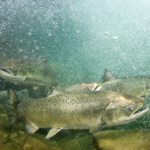Energy carriers are getting more expensive, heating fee increases all the time, but in many houses it does not become warmer from this, for some reason, it does not become. The heating mains leading from the old barely breathing boiler rooms to high -rise buildings are not old by leaps and bounds. What a way out of all this? Only one – insulate!
One of the most affordable and effective ways to increase the energy -saving characteristics of any building is the use of specialized thermal insulation materials. They are used to warm the external and internal walls, roofs, foundations, balconies, ceilings.
More and more residents of both multi -storey buildings and private buildings understand that it is simply necessary to warm the house (apartment, garage, country house). It is necessary to save money, to increase temperature inside the house in the cold season. It is necessary to insulate, but before making a choice in favor of a particular method of insulation, you need to get as much information as possible about the characteristics, service life, environmental safety of materials for insulation. You can rely on the choice of a construction team only if you completely trust these specialists. Otherwise, you yourself must have at least a minimum set of knowledge on this issue.
Currently, the market for building thermal insulation materials is simply huge and is represented by the widest spectrum of various heaters.
Building stores offer all kinds of aggregates, slabs made of porous organic materials, light wall blocks made of foamed glass and concrete, heater from polystyrene foam and mineral wool and t. D.
When choosing a heater, first of all, you should pay attention to such a parameter as thermal conductivity. The lower the value, the thinner you need a layer of thermal insulation for reliable insulation of the house.
The next most important property of insulation is the ability to repel moisture. The greater the water -repellent ability, the better the insulation will perform its “responsibilities”.
And, of course, the insulation, like all structural materials of the house, should have a long service life, be fireproof and harmless from the point of view of ecology.
Purely consumer properties end there and we move on to technological issues. In parallel with the choice of insulation, be sure to be interested in the complexity and approximate cost of work. The technology of insulation by various materials differs so much that the difference in the cost of work may differ several times.
We will finish the general phrases and today I present one of the options for insulation of the house-a modern moisture-resistant heat-insulating material for external and internal plastering work on a mineral basis-thermo-lite.
Thermal insulation plaster
This insulation is a dry, fine -grained mixture with a fraction (sand size) from 0.75 to 3.0 mm. High thermophysical and mechanical indicators are provided with an accurately balanced selection of the components of the mixture, which includes: a white sequence, mineral porous filler, modifying additives.
Subject to the preparation technology, the thermal insulation mixture forms a plastic plaster mass with the uniform distribution of all components in it. The resulting mixture has high adhesion (the ability to clutch) to the bases of brick, heavy and cellular concrete, shell.
Brief characteristics of thermal insulation plaster. The mixture of thermo-lite is environmentally friendly, chemically and biologically neutral material. The composition does not burn and does not form smoke, non -toxic. After applying to the base, it forms a vapor permeable and fracture -resistant coating. Not afraid of the effects of ultraviolet rays, does not contain asbestos and polystyrene foam.
The use of this material improves the quality of construction work due to excellent plasticity, high adhesion, strength and ease of use. Depending on the type of work and the level of mechanization, labor productivity increases by 3-4 times, and the material intensity of work decreases by almost 3 times compared to the work where other heaters are used.
Unlike multi-stage thermal insulation systems of buildings, the application of thermal insulating plaster mixture of thermo-lite on the surface of structures does not require additional installation of supporting profiles, dowels, surface reinforcement. The mixture is pounced as ordinary plaster, and rubbed and stretched like a putty. The reinforcement and metal parts of the structures are not corroded by the plaster mixture.
The coating is a monolithic, continuous thermal insulation system that eliminates the formation of “cold bridges”, reliably protecting the supporting structures from adverse atmospheric influences.
Another feature of the use of thermal insulation plaster is small technological breaks between the application of layers (from 2-4 to 8 hours), unlike multi-layer structures with adhesive and reinforcing layers. The material can be used on the construction site in small portions, stored at the place of work in a dry room on pallets for a long time. Being a mortar mixture on a mineral basis, thermal insulating plaster thermo-lite becomes stronger without changing its thermal insulation parameters.
Areas of thermal insulation: cottage construction and individual residential housing construction (plaster simultaneously acts as a thermal insulation of the facade and decorative decoration); monolithic and panel housing construction-thermal insulation of the external and internal surfaces of the walls; monolithic heat -insulating belt of basement and first floors of buildings; thermal insulation of attic floors; heat -insulating pouring in brickwork; the heat -sound insulating floor filling under the screed and under the heating elements when the “warm floor” is arranged; decoration of rooms with high humidity (eliminating the problem of raw, freezing and “flowering” walls); sealing joints, cracks and connections in the prefabricated structural element; repair and reconstruction of housing and non -residential fund (cellars, half cellars, cellars, technical utility rooms);thermal insulation of the base of the floor over the basement; fire -resistant protection of metal frame structures.
And this is only a brief description. Impressive.



